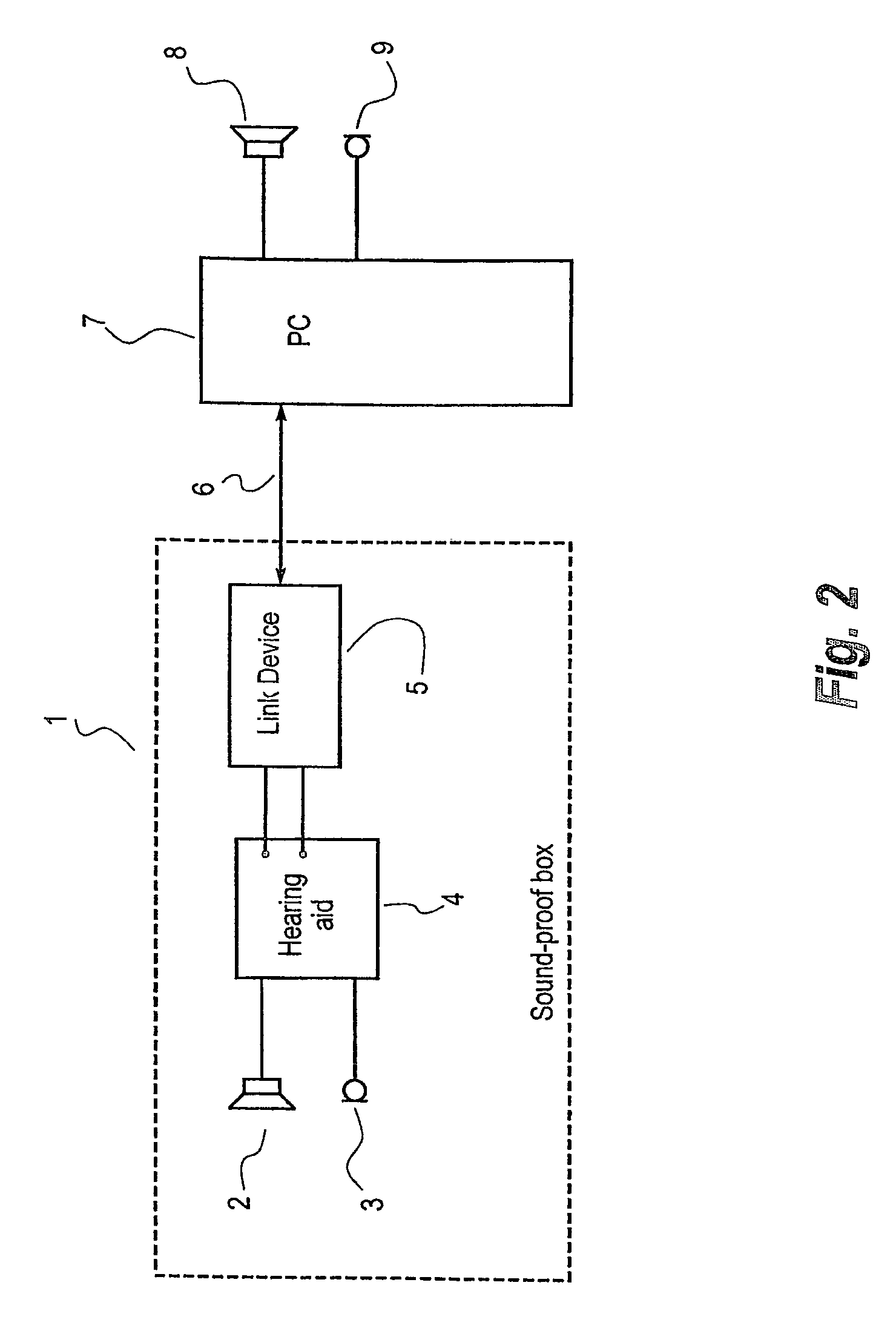System and method for programming a hearing aid
a hearing aid and programming system technology, applied in the field of hearing aids, can solve the problem of not having sufficient capacity to transfer uncompressed audio data, and achieve the effect of modest bandwidth, reduced data transmission rate, and no noticeable degrading effect on received sound signals
- Summary
- Abstract
- Description
- Claims
- Application Information
AI Technical Summary
Benefits of technology
Problems solved by technology
Method used
Image
Examples
Embodiment Construction
[0030]FIG. 1 shows a flowchart of the software algorithm according to the invention. The algorithm is assumed to be adapted for running on a standard computer, such as a PC, and the practical implementation of the software algorithm should be evident to a person skilled in the art. The flowchart is divided into four main parts, or threads; main, MCI, shared buffer handler, and link receiver (denoted NOAHLink in FIG. 1). The main thread is responsible for initialization of the talk-over function, the conversion, and the link transmission handler. The MCI (media control interface) thread, handles the sound data collected from the microphone and the buffers involved in this activity. The shared buffer handler forms the interface between the main thread and the MCI thread, making data packets from the MCI thread available to the main thread. The link receiver is adapted to receive compressed audio data from the main thread via the link transmission handler and to decompress the compress...
PUM
 Login to View More
Login to View More Abstract
Description
Claims
Application Information
 Login to View More
Login to View More - R&D
- Intellectual Property
- Life Sciences
- Materials
- Tech Scout
- Unparalleled Data Quality
- Higher Quality Content
- 60% Fewer Hallucinations
Browse by: Latest US Patents, China's latest patents, Technical Efficacy Thesaurus, Application Domain, Technology Topic, Popular Technical Reports.
© 2025 PatSnap. All rights reserved.Legal|Privacy policy|Modern Slavery Act Transparency Statement|Sitemap|About US| Contact US: help@patsnap.com



